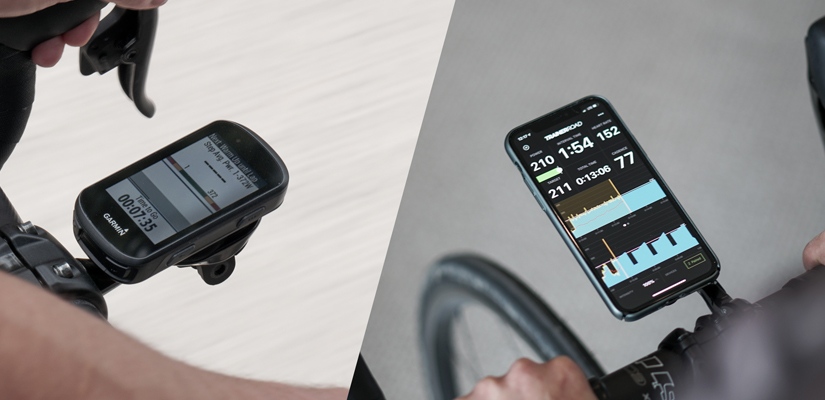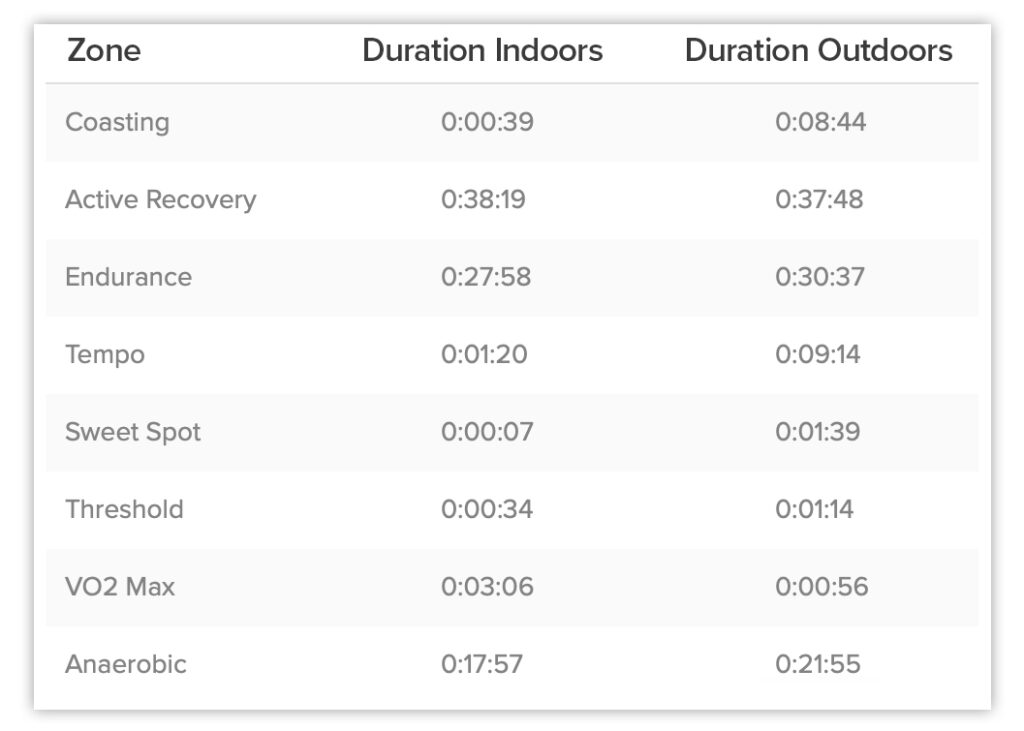Riding Indoors vs. Riding Outside: A Comparison

TrainerRoad Outside Workouts allow you to maintain the structure and quality of your training plan, while enjoying the beauty of the great outdoors. How do these workouts compare to their indoor counterparts?
Key Takeaways:
- Structured training should continue all year
- Outside Workouts can be just as effective as those completed indoors
- Variables including terrain, weather, and traffic need to be anticipated
- Outside Workouts are often less time-efficient than indoor rides, but added time offers an opportunity for aerobic riding or extra intervals
- Power is more variable outside, so focus on the big picture
Moving Outside
The arrival of summer weather brings the irresistible opportunity to ride outside. It’s the best time to ride bikes, but for many cyclists heading outdoors means a reduction in structured training and a gradual decline in fitness. It doesn’t have to be this way- TrainerRoad Outside Workouts make it easy to complete your scheduled workouts outdoors, conveniently syncing to your Wahoo or Garmin head unit.
Over the last several weeks, I’ve done about 70% of my training outside, following the Mid-Volume General Build plan. In this post I’ll use TrainerRoad’s performance analytics tools to compare two of my most challenging recent Outside Workouts to examples of these same rides completed indoors, to see their similarities and differences.
Kaweah

Kaweah is a 90-minute threshold workout, with 5x 10-minute intervals around 96-99% of FTP and 5 minute recoveries.
Indoors
My colleague James Singer did this workout indoors on an Elite Direto smart trainer. His trainer’s ERG mode kept James’s power quite close to his intended target throughout the ride. Some small fluctuations are normal, and James did an impressive job completing a very challenging workout. His TSS, IF, and average power were each within 1% of expectations.

Outdoors
I rode Kaweah outside on a flat, low-traffic route on a very hot and humid day. The route I chose required me to ride almost 16 miles before I reached my intended starting point, so I skipped the scheduled warmup. I completed the first 4 threshold intervals as planned, with a stop sign coinciding nicely (and safely) with my first recovery.

After my fourth interval, heat and poor nutrition were causing me serious discomfort and I stopped to refill my water bottles and have a snack. This extended my recovery and after warming back up I completed the last scheduled interval, and I even added another effort at reduced intensity on the long ride home.
Comparison
James and I both achieved our target wattages for each interval, but I spent a bit less total time at Threshold and more time in my Vo2 max and Tempo zones than James did. TSS and Intensity Factor for our intervals were almost identical, so while my efforts were less consistent outside, they were comparable in average power to those done on the trainer. As planned, my total ride took twice as long as James’s, and my overall intensity for the day was lower because of the easy ride to and from home.

Our two workouts stimulated the same energy systems, but James’s indoor workout did this more efficiently than mine, given the route I’d chosen. However, the extra 1.5 hours gave me a significant block of easy aerobic training, a beneficial side effect of a long ride. James’s smart trainer allowed for steady intervals that look cleaner on a graph, but I held my power as consistently as I could on the road, and I achieved a comparable training effect. The extra time left me with a bit more TSS and fatigue than my training plan had scheduled, so I took extra care to recover properly before my next workout.
Ansel Adams +4

This is a very challenging anaerobic workout, with 3×11 minute sets of 50 seconds at 135% FTP with 40 second recoveries. This is followed by 25 minutes of aerobic riding at 65% FTP.
Indoors
Clif Bar Racing’s Pete Morris rode Ansel Adams +4 on Elite Nero Rollers, using ERG mode. Pete slightly undershot his first several intervals, but with each subsequent set his power increased and he rode the last few above target.

Pete’s power held steady during the recovery periods, but it’s interesting to note how his power fluctuated during the last 20 minute endurance interval. During the first half of this section his power varied quite widely as he struggled to recover. About halfway through this interval he got off the bike to stretch, and his power was visibly steadier when he returned to complete the ride.
Outdoors
I rode Ansel Adams +4 outside on a flat out-and-back route with one stop sign and a few turns. Unlike Pete, I overshot the first few warm up sprints, common on high-intensity efforts outside without the guidance of ERG mode. For the rest of the workout I was slightly over target but consistent across the hard intervals, showing that I effectively paced these very challenging efforts. My power was highly varied during the recovery intervals, with significant time spent coasting. Although I was under my specified target for these periods, the sprints were the main training goal of this workout, and I prioritized fully recovering between them.

I was also very inconsistent during the aerobic endurance interval at the end of the ride. Rather than trying to hold perfectly steady power, my goal here was to avoid letting my wattage drop too low or surge too high, which is a more natural way to pace when riding outside. Despite the fluctuations, my average power for this interval fell right in line with the workout’s target. The planned workout ended about 7 miles from my starting point, and I rode the last 25 minutes at whatever pace felt comfortable. I even threw in a little sprint out of a turn, just for fun.
Comparison
Pete and I both paced our hard intervals effectively, with Pete’s efforts getting stronger as the workout went on, and mine staying consistent throughout. Our overall times spent in each zone were strikingly similar, with me recording a few more minutes at Anaerobic power and pete a bit longer at VO2, and my outdoor ride of course including more coasting.

Despite my less consistent recovery and endurance efforts, our times spent in these easier zones were also within a few minutes of each other. These rides were extremely similar in Intensity Factor, and stimulated identical energy systems- two efficient and productive workouts, with mine lasting slightly longer as I rode to and from home.
In Conclusion
TrainerRoad Outside Workouts are an effective and fun way to take advantage of warmer weather and continue to get faster all year. Data tends to look cleaner from an indoor trainer ride, but just focus on staying close to target power when outside and don’t stress over minor fluctuations. In many cases riding outside might take a little longer, but this time can be utilized with aerobic endurance riding or even an extra interval or two, if you’re feeling good. Choose a route that will best suit your workout goals, remember to pay careful attention to traffic and road hazards, and have fun.
For more on Outside Workouts, check out Tips for Safe Outside Workouts. For help setting up Outside Workouts on your Garmin device, click here. For instructions on setting up Outside Workouts on your Hammerhead device, click here. For help with Wahoo computers, click here.
For more cycling training knowledge, listen to Ask a Cycling Coach — the only podcast dedicated to making you a faster cyclist. New episodes are released weekly.